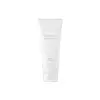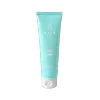What's inside
What's inside
 Key Ingredients
Key Ingredients

 Benefits
Benefits

 Concerns
Concerns

 Ingredients Side-by-side
Ingredients Side-by-side

Water
Skin ConditioningSodium Cocoyl Isethionate
CleansingGlycerin
HumectantHydroxypropyl Starch Phosphate
Sodium Methyl Cocoyl Taurate
CleansingPropanediol
SolventPotassium Cocoyl Glycinate
Acrylates Copolymer
Cetearyl Alcohol
EmollientPotassium Cocoate
EmulsifyingSorbitan Olivate
EmulsifyingSalicylic Acid
MaskingGlycol Distearate
EmollientGlyceryl Stearate
EmollientCitric Acid
BufferingCaprylyl Glycol
EmollientButylene Glycol
Humectant1,2-Hexanediol
Skin ConditioningGlyceryl Caprylate
EmollientCentella Asiatica Extract
CleansingDisodium EDTA
Water, Sodium Cocoyl Isethionate, Glycerin, Hydroxypropyl Starch Phosphate, Sodium Methyl Cocoyl Taurate, Propanediol, Potassium Cocoyl Glycinate, Acrylates Copolymer, Cetearyl Alcohol, Potassium Cocoate, Sorbitan Olivate, Salicylic Acid, Glycol Distearate, Glyceryl Stearate, Citric Acid, Caprylyl Glycol, Butylene Glycol, 1,2-Hexanediol, Glyceryl Caprylate, Centella Asiatica Extract, Disodium EDTA
Water
Skin ConditioningSodium Cocoyl Isethionate
CleansingSodium Isethionate
CleansingCocamidopropyl Betaine
CleansingGlycerin
HumectantCoconut Acid
CleansingPotassium Cocoate
EmulsifyingButylene Glycol
HumectantPotassium Cocoyl Glycinate
Melaleuca Alternifolia Leaf Oil
AntioxidantLimonene
PerfumingPhyllostachys Nigra Leaf Extract
Skin ConditioningBambusa Vulgaris Water
Skin ConditioningRosmarinus Officinalis Leaf Extract
AntimicrobialLavandula Angustifolia Flower Extract
CleansingMentha Piperita Leaf Extract
Skin ConditioningMonarda Didyma Leaf Extract
Skin ConditioningChamomilla Recutita Flower Extract
MaskingFreesia Refracta Extract
Skin ConditioningMelaleuca Alternifolia Leaf Extract
PerfumingCitric Acid
BufferingSodium Chloride
MaskingDisodium EDTA
1,2-Hexanediol
Skin ConditioningEthylhexylglycerin
Skin ConditioningWater, Sodium Cocoyl Isethionate, Sodium Isethionate, Cocamidopropyl Betaine, Glycerin, Coconut Acid, Potassium Cocoate, Butylene Glycol, Potassium Cocoyl Glycinate, Melaleuca Alternifolia Leaf Oil, Limonene, Phyllostachys Nigra Leaf Extract, Bambusa Vulgaris Water, Rosmarinus Officinalis Leaf Extract, Lavandula Angustifolia Flower Extract, Mentha Piperita Leaf Extract, Monarda Didyma Leaf Extract, Chamomilla Recutita Flower Extract, Freesia Refracta Extract, Melaleuca Alternifolia Leaf Extract, Citric Acid, Sodium Chloride, Disodium EDTA, 1,2-Hexanediol, Ethylhexylglycerin
 Reviews
Reviews

Ingredients Explained
These ingredients are found in both products.
Ingredients higher up in an ingredient list are typically present in a larger amount.
1,2-Hexanediol is a synthetic liquid and another multi-functional powerhouse.
It is a:
- Humectant, drawing moisture into the skin
- Emollient, helping to soften skin
- Solvent, dispersing and stabilizing formulas
- Preservative booster, enhancing the antimicrobial activity of other preservatives
Butylene Glycol (or BG) is used within cosmetic products for a few different reasons:
Overall, Butylene Glycol is a safe and well-rounded ingredient that works well with other ingredients.
Though this ingredient works well with most skin types, some people with sensitive skin may experience a reaction such as allergic rashes, closed comedones, or itchiness.
Learn more about Butylene GlycolCitric Acid is an alpha hydroxy acid (AHA) naturally found in citrus fruits like oranges, lemons, and limes.
Like other AHAs, citric acid can exfoliate skin by breaking down the bonds that hold dead skin cells together. This helps reveal smoother and brighter skin underneath.
However, this exfoliating effect only happens at high concentrations (20%) which can be hard to find in cosmetic products.
Due to this, citric acid is usually included in small amounts as a pH adjuster. This helps keep products slightly more acidic and compatible with skin's natural pH.
In skincare formulas, citric acid can:
While it can provide some skin benefits, research shows lactic acid and glycolic acid are generally more effective and less irritating exfoliants.
Most citric acid used in skincare today is made by fermenting sugars (usually from molasses). This synthetic version is identical to the natural citrus form but easier to stabilize and use in formulations.
Read more about some other popular AHA's here:
Learn more about Citric AcidDisodium EDTA plays a role in making products more stable by aiding other preservatives.
It is a chelating agent, meaning it neutralizes metal ions that may be found in a product.
Disodium EDTA is a salt of edetic acid and is found to be safe in cosmetic ingredients.
Learn more about Disodium EDTAGlycerin is already naturally found in your skin. It helps moisturize and protect your skin.
A study from 2016 found glycerin to be more effective as a humectant than AHAs and hyaluronic acid.
As a humectant, it helps the skin stay hydrated by pulling moisture to your skin. The low molecular weight of glycerin allows it to pull moisture into the deeper layers of your skin.
Hydrated skin improves your skin barrier; Your skin barrier helps protect against irritants and bacteria.
Glycerin has also been found to have antimicrobial and antiviral properties. Due to these properties, glycerin is often used in wound and burn treatments.
In cosmetics, glycerin is usually derived from plants such as soybean or palm. However, it can also be sourced from animals, such as tallow or animal fat.
This ingredient is organic, colorless, odorless, and non-toxic.
Glycerin is the name for this ingredient in American English. British English uses Glycerol/Glycerine.
Learn more about GlycerinThis ingredient is the potassium salt of coconut acid. Coconut acid is created by mixing fatty acids from coconut oil.
It is an emulsifier, surfactant, and cleanser. According to a manufacturer, it contains glycerin.
Potassium Cocoyl Glycinate is an amino acid-based surfactant and cleaning agent. This ingredient can be derived from animals or plants. It may also be synthetically created from fatty acids of the coconut and glycine.
Potassium Cocoyl Glycinate is a gentle surfactant. Surfactants help gather the dirt, oil, and other pollutants from your skin to be rinsed away. It is a mild cleanser and naturally produces foam.
Sodium cocoyl isethionate is a natural ingredient from coconut oil. It is an ultra gentle cleanser that gives a nice foam without drying the skin or impacting the skin barrier.
The amount of foam created depends on the amount of sodium cocoyl isethionate used in the product.
This ingredient also helps improve the spreadability of a product.
Learn more about Sodium Cocoyl IsethionateWater. It's the most common cosmetic ingredient of all. You'll usually see it at the top of ingredient lists, meaning that it makes up the largest part of the product.
So why is it so popular? Water most often acts as a solvent - this means that it helps dissolve other ingredients into the formulation.
You'll also recognize water as that liquid we all need to stay alive. If you see this, drink a glass of water. Stay hydrated!
Learn more about Water